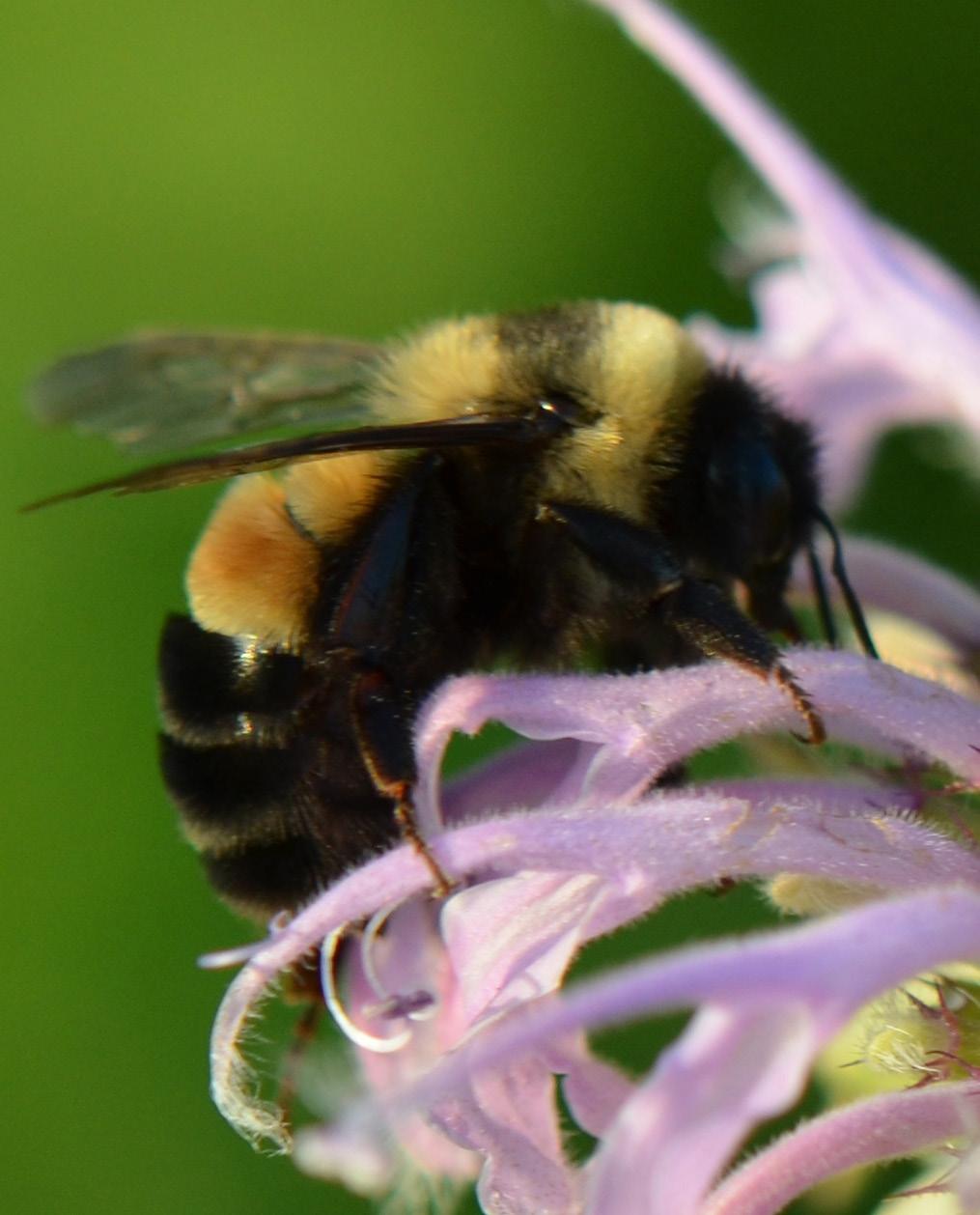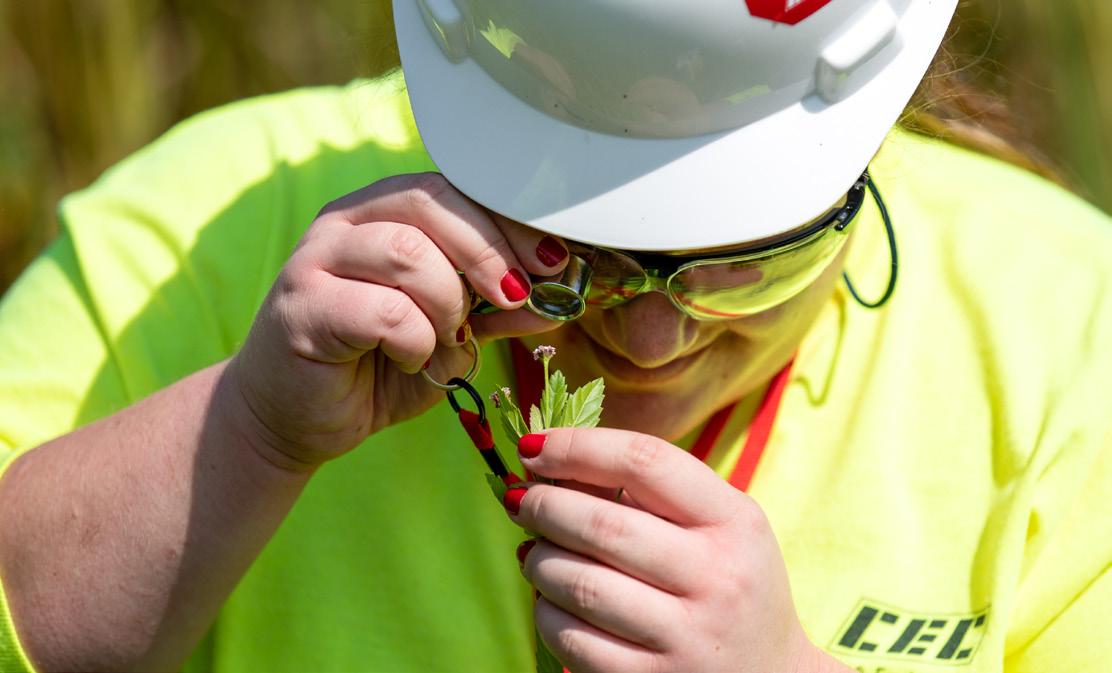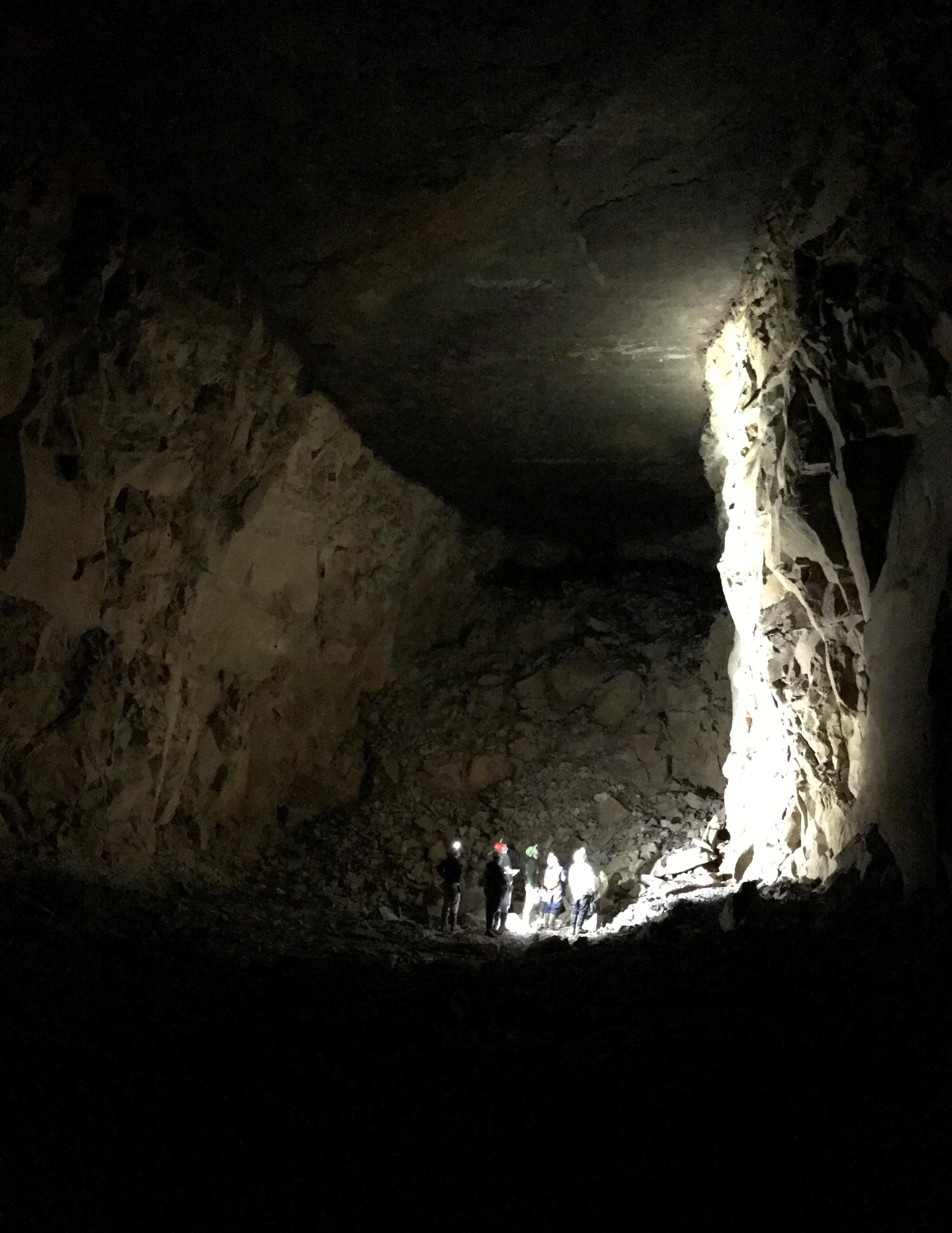
7 minute read
BALANCING NATURE & BUSINESS
from Elements 2021 Vol. 1
by cecinc
The candy darter was was listed as endangered in November 2018.
Photo: U.S. Fish & Wildlife Service
There is no shortage of challenges CEC staff face to protect species and habitats while also meeting a client's needs. It's a vital, complex task when dealing with industries that impact our everyday lives.
How much can one little fish impact the way our clients conduct their business? Quite a bit, if that little fish is found on the federal list of endangered species.
Finding a species protected by the Federal Endangered Species Act (ESA) at one of our clients’ project sites often triggers additional studies, which are often followed by species conservation actions required for the project to proceed. Balancing species and habitat protection and a client’s needs often is complicated. It’s even more complex when you involve industries needed to sustain our way of life.
CEC ESA compliance expert Leo Lentsch shares that CEC clients want to protect endangered species and our environment while effectively operating their businesses, so it’s important for CEC to help our clients find solutions that meet both the federal and state conservation mandates and business operations goals.
“For many clients, it’s about finding the right combination of innovative solutions to protect the species and their habitats while still being able to conduct business,” says Lentsch. “Sometimes, the solution may change the way a client has done business in the past. But the important idea is that they are able to continue to do business while protecting vulnerable species and habitats.”
FINDING COMMON GROUND
According to Lentsch, something CEC does really well is balancing our clients’ business needs with protection of endangered species and the environment, whether we are representing industry or a government agency.
“Knowing the client, what their goals are, and their challenges — it's all wrapped up together. And one of those challenges is the protection of endangered species while ensuring our clients their projects will move forward. It’s about being able to listen, understand different perspectives, Rusty patched bumble bee recommend innovative solutions, and implement In the Western U.S., water is a the project while providing precious commodity. At the time, a exceptional service,” says Lentsch. local water district was concerned
Lentsch says this was a valuable that the listing of a new fish species principle he learned early in his would impact their operations. It career working on the Virgin River was Lentsch’s responsibility in his system, a tributary of the Colorado role with UDWR to ensure longRiver, in southwestern Utah as an term conservation of the species. employee of the Utah Division of Knowing that most of the big Wildlife Resources (UDWR). impacts to fish occur when water
CEC Expands Ecological Services
In fall 2020, CEC expanded its ecological sciences arsenal with the hiring of nationally recognized Endangered Species Act (ESA) compliance expert Leo Lentsch.
Lentsch brings more than 38 years of experience with Endangered Species Act (ESA) compliance, National Environmental Policy Act (NEPA) compliance, Federal Energy Regulatory Commission (FERC) compliance, resource conservation planning and management, ecological studies, instream flow assessments, ecological restoration, habitat assessment, species status assessments, distribution studies, invasive species management, climate change, and endangered species recovery planning. To this end, he has served on multiple interagency and industry-based advisory teams tasked with offsetting environmental impacts across the U.S. is withdrawn from a water body, he engaged the water district early in the process while opportunities to offset impacts to the species were plentiful and impacts to the water supply were minimal. Lentsch worked with the water district to understand their needs and find solutions that protected the fish and allowed the district to develop their water supply. Most importantly, the water district and Lentsch built a relationship and worked together to find common ground. Although the solution may not have been ideal for the water district and regulatory agencies, it was important to provide the assurance that both water supply and species conservation mandates were going to be met.
Both CEC and Lentsch have vast experience working with both industry and federal and state agencies on comparable issues. Similar to our industry clients, our agency clients execute their mandates and engage in projects that may have impacts on natural resources. They also have the responsibility to offset potential impacts with species conservation measures. Lentsch noted a recent example from working with the Pennsylvania Department of Conservation & Natural Resources Bureau of Forestry.
The Bureau of Forestry has a mandate to ensure a sustainable level of timber harvest. At the same time, the Department of Conservation has a mandate to ensure the long-term viability of the state’s wildlife resources, including conservation of imperiled species

protected under the ESA. To achieve a balance between these two mandates, the state engaged with CEC in the development of a Habitat Conservation Plan (HCP). While it is still in the final stages of development, this HCP includes assurances for both agencies by committing to implement a series of measures that balance timber harvest with conservation of endangered bats species such as the northern long-eared bat. CEC has demonstrated similar successes across the U.S., with federal, state and local agencies, as well as the full range of industries that ensure strong and sustainable economic growth. At the heart of those successes were strong client relationships centered on trust.
CEC places the highest regard on maintaining relationships and understanding the ever-changing goals of clients.
“At the end of the day, clients want assurance that we have them covered and will find a solution to meet their needs,” says Lentsch.
INNOVATIVE SOLUTIONS
CEC provides services that support our clients as they balance protecting the environment and endangered species and conducting their business operations. These services range from assessments and permitting to more advanced solutions, such as bird conservation.
Today, there are many innovative solutions for offsetting impacts to endangered species that were once thought difficult to mitigate. For example, wind is an excellent source of energy. However, there are issues with bird and bat species flying into the wind turbines. Currently, CEC is working with clients to develop conservation plans to mitigate this problem.
“For years, we have struggled with wind turbine collisions. Now there is new technology that can be installed in or around the area of the turbines that detects birds electronically and shuts down the turbine until the bird flies by,” says Lentsch. “Innovations like this make finding workable solutions possible. It’s a win for the species and the industry.”
For more information about services related to endangered species, contact Leo Lentsch at llentsch@cecinc.com.
What is one of the most unique projects you’ve worked on? I have completed over 30 complex, contentious and challenging ESA compliance projects, but some of the unique projects I worked on did not involve ESA compliance. Among those, was when I was the Managing Editor and Principal Author of the Bureau of Reclamation and U.S. Army Corps of Engineers' National Large Wood Manual. I led a team of scientists and restoration practitioners to develop the more than 600-page manual. The manual is designed to assist with the planning, design, placement, maintenance and assessment of large wood in rivers and streams, with an emphasis on restoring ecosystem forms, processes and functions.
Is there a hot-button species out there right now that could be affecting projects? While there are some species that have a broad historic geographic distribution and get a lot of attention, such as the rusty patched bumble bee, northern long-eared bat, piping plover, American burring beetle and dwarf wedge mussel, the listing of species across CEC’s geographic footprint is quite variable, and any listed species can be a hot-button species if it stops or delays one of our clients' projects. It is important for us to recognize what is listed in the states we work in and be prepared to deal with listed species issues that may impact a client’s project.

A CEC employee performing a botanical survey
SPOTLIGHT /// LEO LENTSCH
CEC'S ESA COMPLIANCE EXPERT
Are there any impending regulatory issues or concerns that people should be aware of? A number of environmental regulations implemented by the last administration are currently under review. Any reversals that may occur will be posted to the Federal Register. As such, we monitor the Federal Register on a daily basis and post significant announcements for our staff while also informing our clients.




